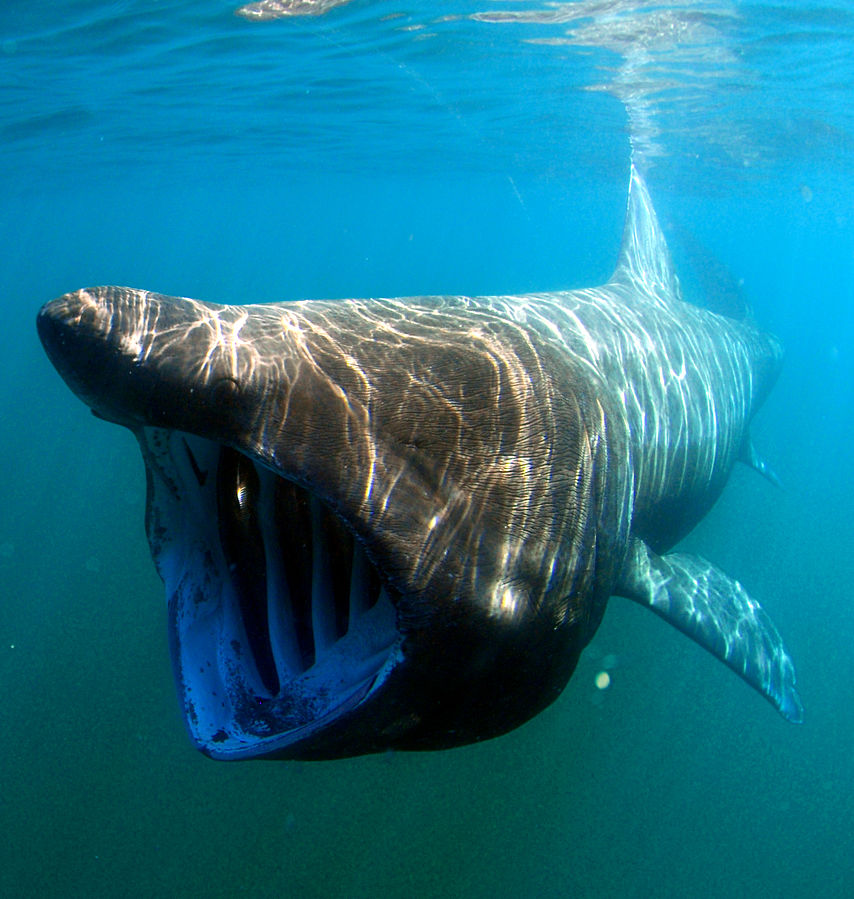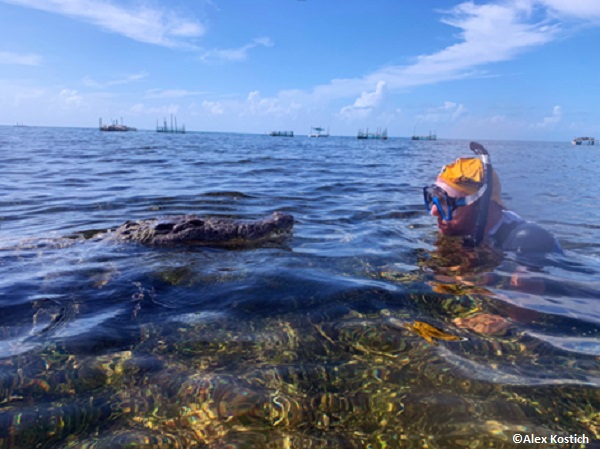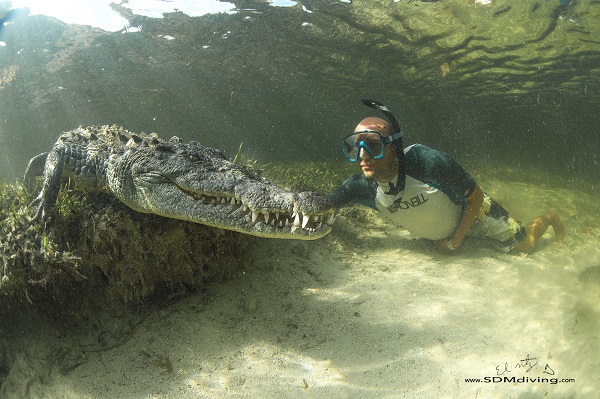Sharks and the UK part 1: During the months of April through September, the southern and western coasts of the United Kingdom have the privilege of becoming a hot spot for sharks. This usually prompts the tabloids in the U.K. to flash headlines across the front pages such as “monster sharks in UK waters”. As shocking as it may seem it is a gentle giant know as the Basking shark.

Basking Sharks are one of the 3 filter feeding sharks with whale sharks and megamouth sharks being the other two. Each year around the British summertime, the sharks arrive from the deep ocean waters to take advantage of the yearly boom in plankton around the south and westerns coasts of the U.K.
They are easily recognizable by their very large gaping mouths. Despite their huge mouths, they have no interest in biting humans, preferring instead to filter vast amounts of plankton from the sea. They are slowing moving and very large. Adults are often around 25-26ft in length with some examples being up to 33ft long, this makes them the 2nd largest fish living in the oceans today (Whale sharks being the largest).
Basking Sharks have been commercially fished extensively for shark fin soup, animal feed and shark liver oil. Meaning they now have a conservation status of vulnerable and are listed as a protected species in UK waters. Although they are not considered dangerous, their huge size means getting too close presents a risk to swimmers and boats, if accidentally bumped or swiped from their powerful tails.
This time of year gives a great opportunity for U.K. shark enthusiasts to view these magnificent creatures. Their docile and slow moving nature means they are very accessible to the public.
Even though enthusiasts are well meaning, concerns have been raised about the impact shark watchers can have on the sharks. Below is the Shark Trust’s code of conduct and recommendations for observing the wonderful Basking Sharks. This will minimize the risk for everyone while reducing the stress levels and harassment for the sharks
Boat control near basking sharks
Restrict your speed to below 6 knots and avoid sudden speed changes.
When closer than 100m switch the engine to neutral to avoid injuring sharks. The viewing distance between the boat and large groups or courting sharks should be at least 500m.
Jet-skis should maintain a slow speed, stay at least 500 m away and not attempt to drive through groups of basking sharks.
Swimming with basking sharks
Do not try to touch the sharks. Maintain a distance of at least 4m from each shark and be wary of the tail.
Groups of swimmers should stay together and ideally remain at the surface. Restrict the number of people in the water at any one time. Take plenty of pictures but avoid flash photography which can scare the sharks. Do not use underwater propelled devices.
Be extremely cautious in areas where basking sharks have been seen breaching. Remember that for every shark visible on the surface there are likely to be more hidden just below.
Take time to observe the direction of movement of the basking sharks to anticipate their course – you can then position yourself for the best view.
Click to read Sharks in the UK part 2
Steve Smith
Follow Mr. Smith on Twitter @ReverendBiz
Related: Was it worth it? 172 sharks culled


